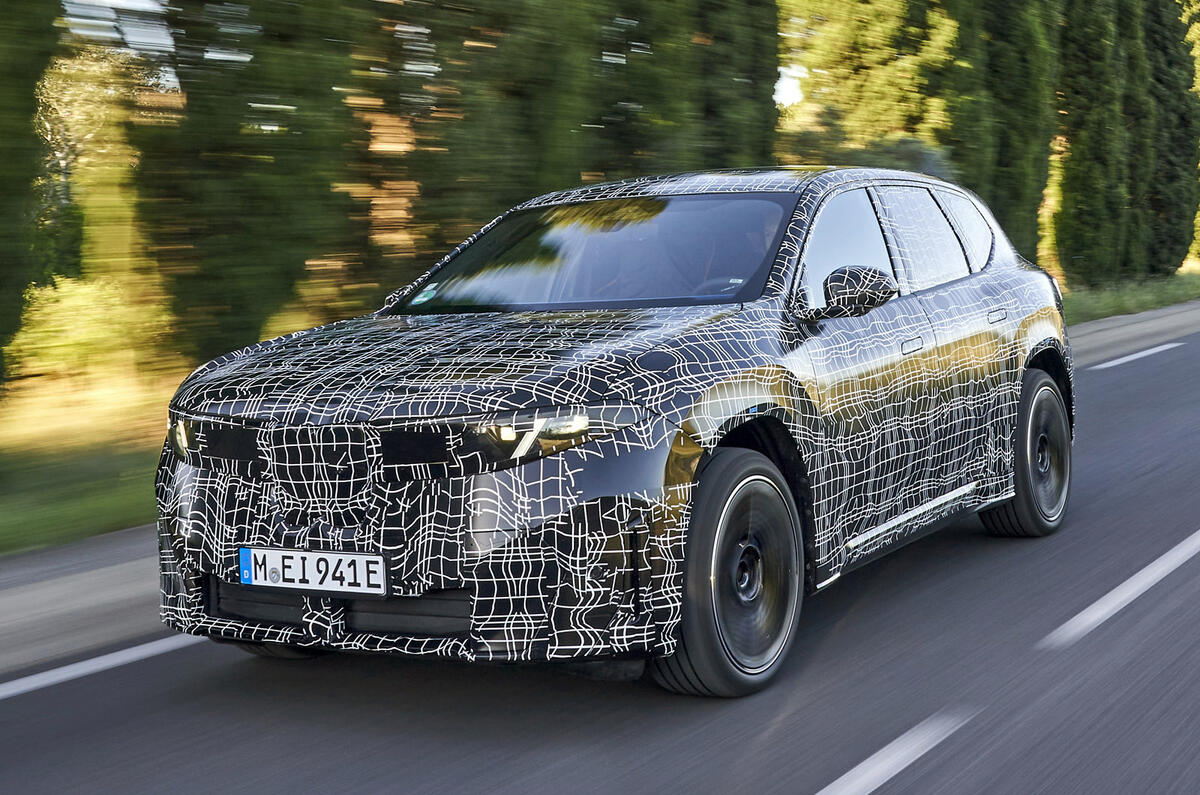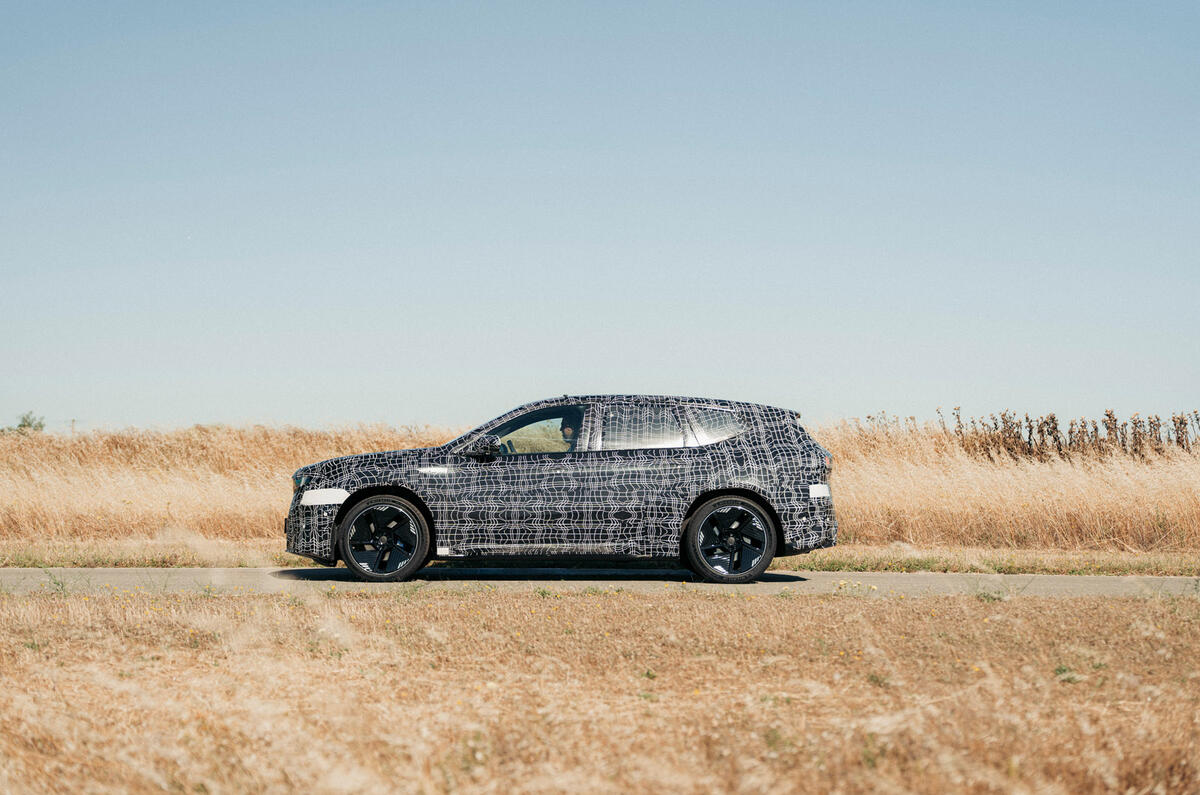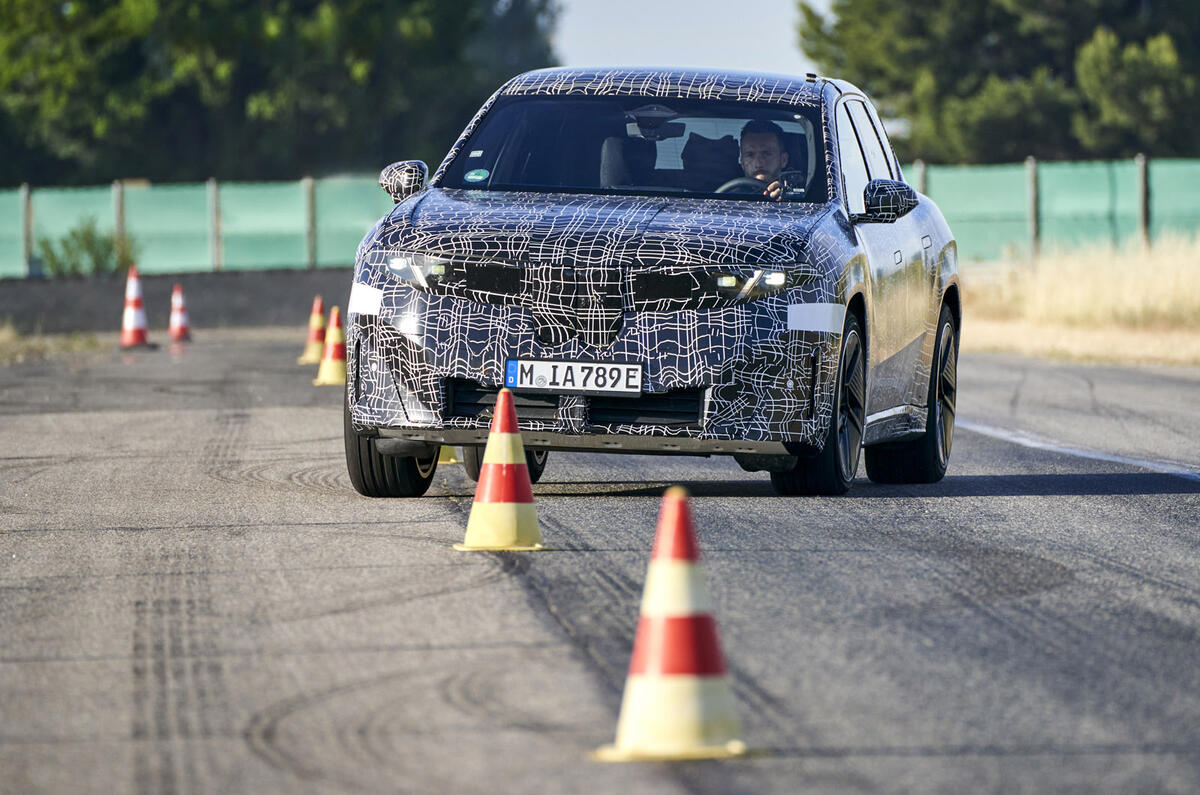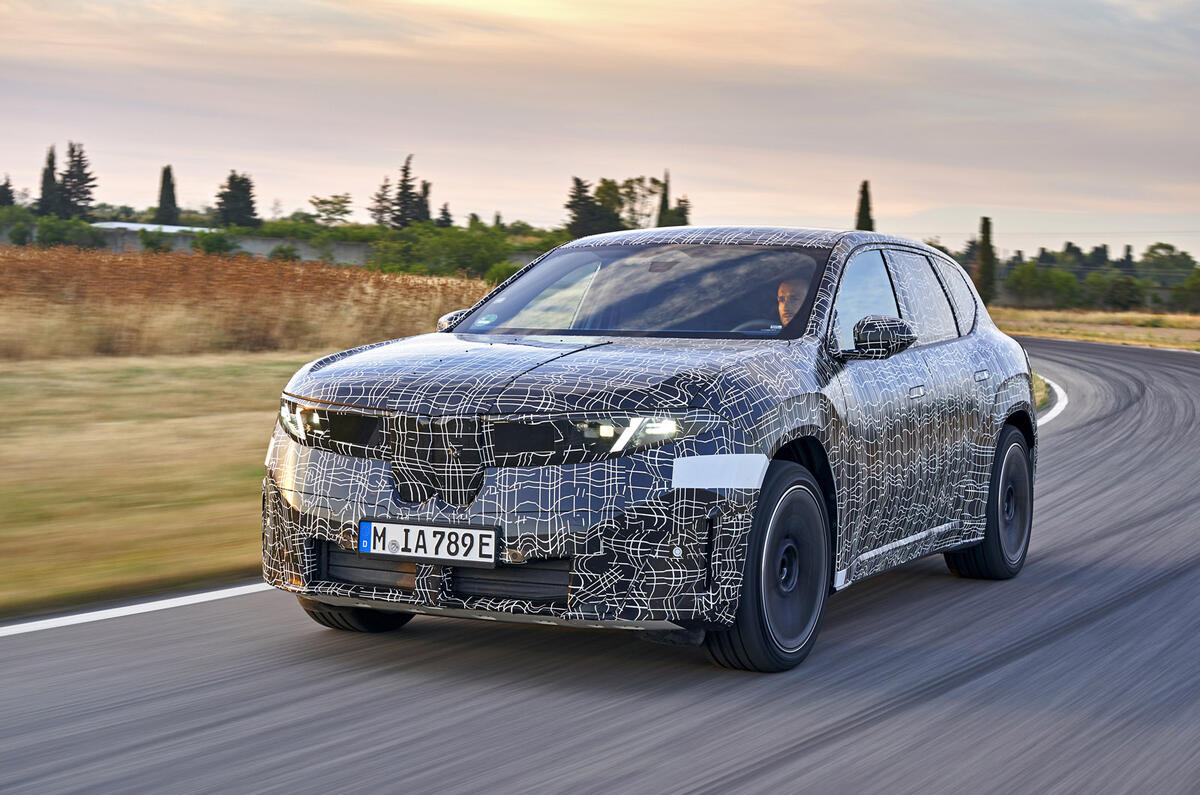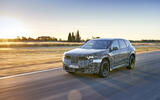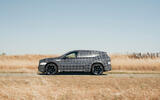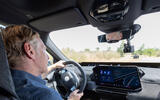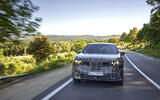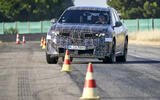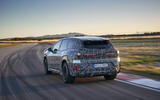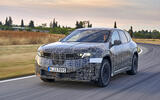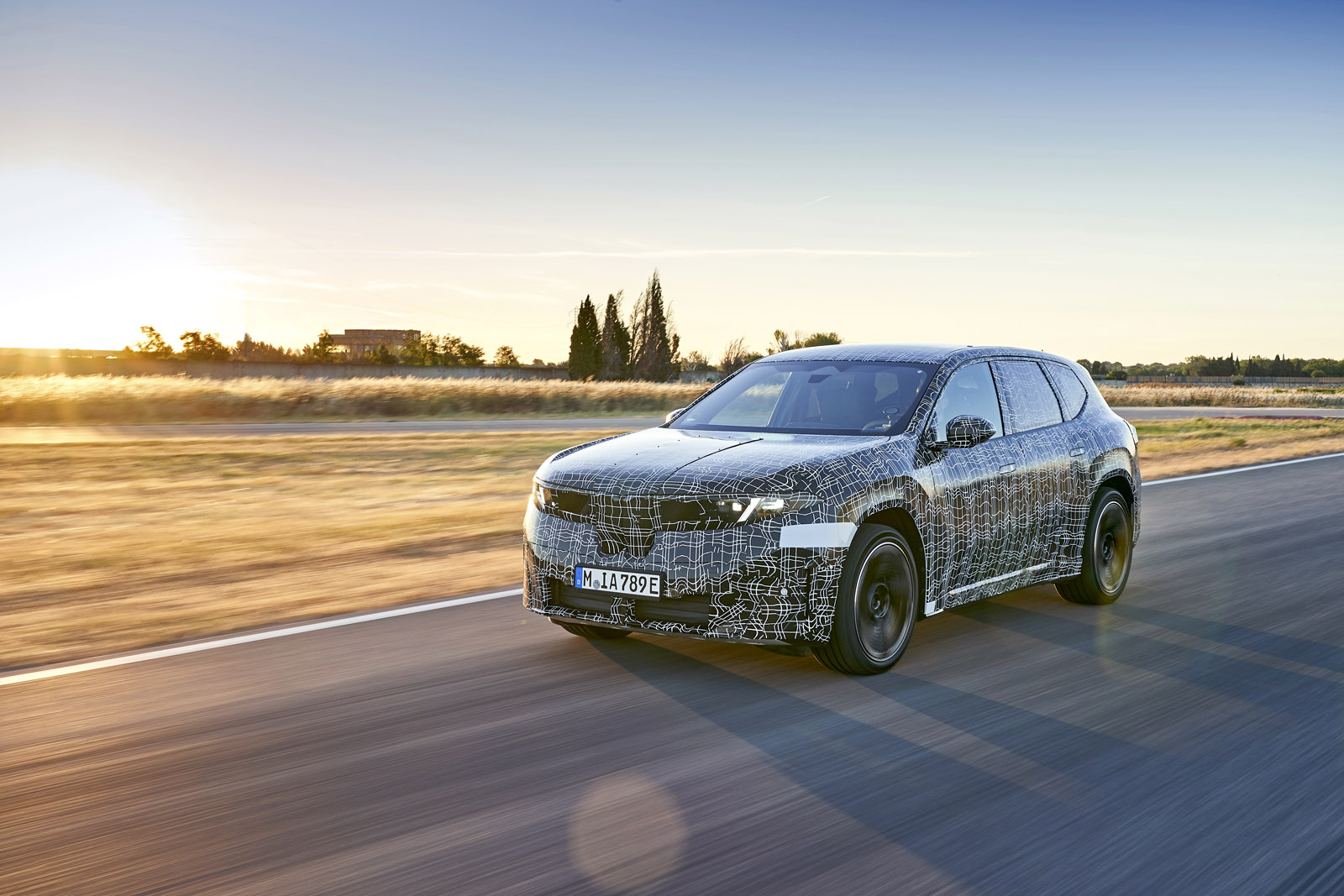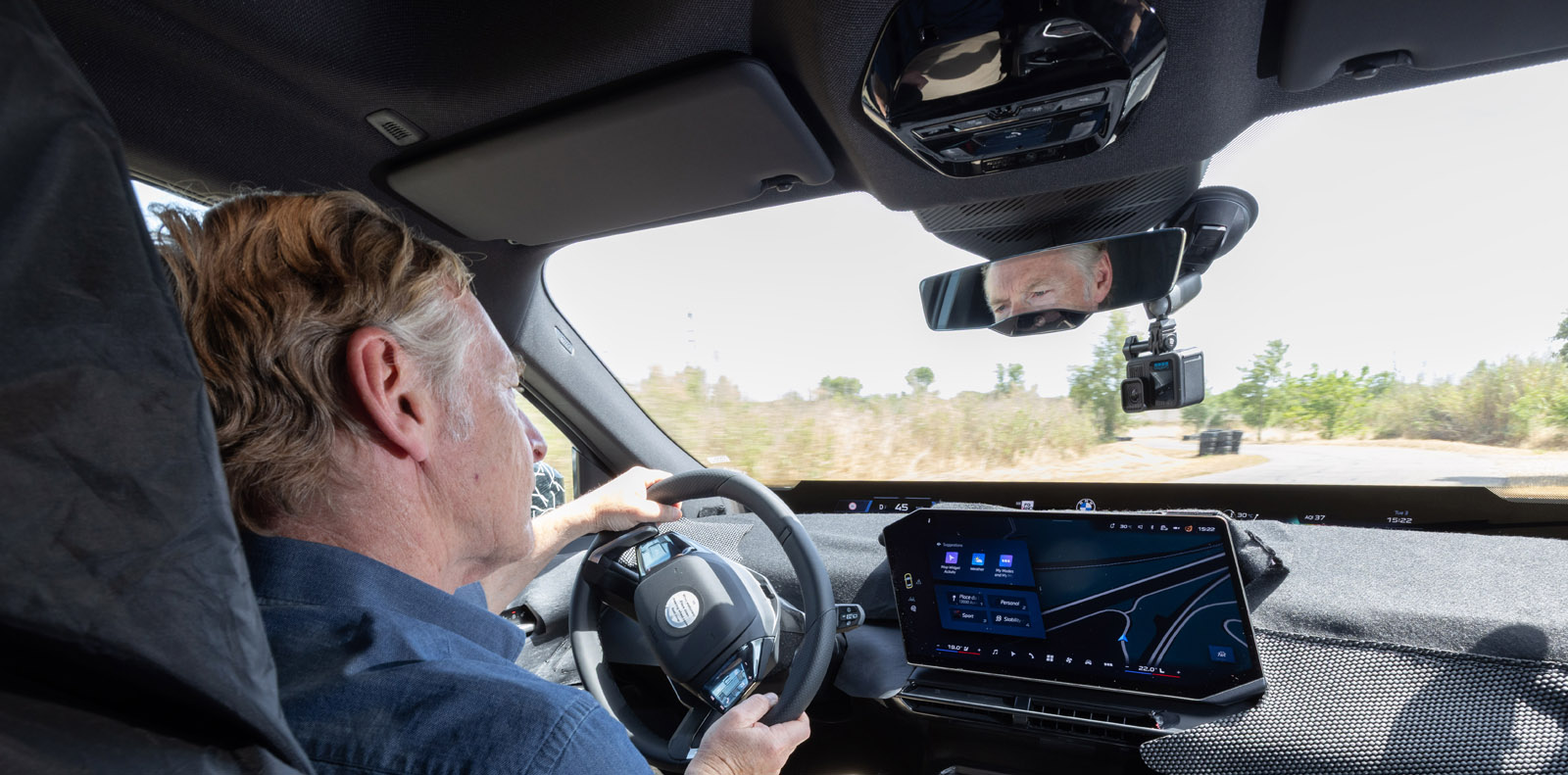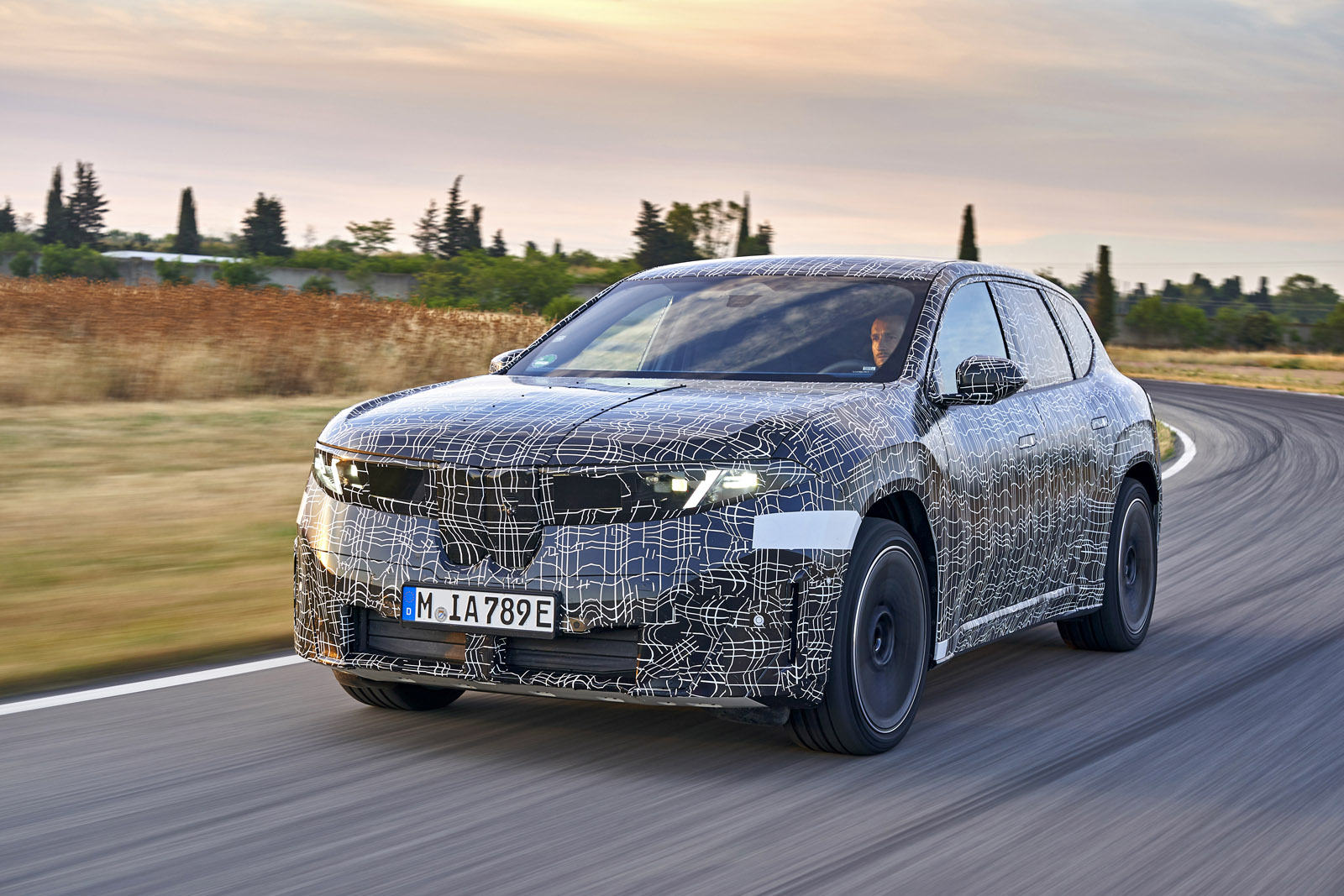There’s no start button. If the key is nearby, the iX3 is effectively on and ready: just knock the gear selector into drive and off you go. Underpinning the new iX3 is BMW’s Gen6 electric drivetrain. It runs on a new 800V electrical architecture, replacing the 400V system of earlier BMW EV models, bringing a major leap in charging capability and performance. It also adopts a new battery made via a ‘cell-to-pack’ process, in which cylindrical battery cells are placed directly into the battery housing without first being assembled into modules.
Compared with the prismatic cells used by BMW’s Gen5 drivetrain, the new battery has 20% greater energy density. BMW has yet to confirm the battery’s capacity, but it claims a WLTP range of up to 497 miles for the iX3 – some 210 miles or 30% more than before. The peak DC charging rate has more than doubled from the 150kW of the previous iX3. It’s now 400kW, allowing a 218-mile top-up in just 10 minutes under ideal conditions. Bi-directional charging is also supported now, meaning the new iX3 can send power to your home or external devices.
Two powertrains will be available: a single-motor, rear-wheel-drive one and a dual-motor, four-wheel-drive version. The latter pairs an asynchronous motor at the front with a synchronous motor at the rear, delivering up to 402bhp and 443lb ft. Expect 0-62mph in less than 5.0 sec and a higher top speed than the previous iX3’s 112mph.
I’m driving early durability prototypes here, some bearing the scars of serious development mileage, yet the steps forward in performance, handling and refinement from the old iX3 are already unmistakable. There are four driving modes: Personal, Sport, Efficient and Silent. The first of those is configurable, allowing adjustment of drivetrain, steering and regeneration settings.
All systems are managed by a new central control unit, dubbed the Heart of Joy, which processes data 10 times faster than BMW’s current system. There’s a heightened level of response and faster reactions at one end of the driving spectrum, calmer and more composed properties at the other.
Energy recuperation remains a key focus. As such, BMW says that up to 98% of braking can be handled by the electric motors alone and the physical brakes are only required during hard stops. As in other existing BMW EVs, there are no steering wheel paddles to alter the level of regen. Instead, you switch between drive and battery mode via the gear selector. D allows for mild coasting while B delivers robust deceleration and true one-pedal driving.



